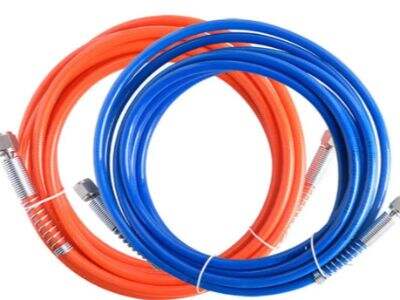As a construction and do-it-yourself expert?
If you tend to do a lot of making or creative projects at home, grouting may have crossed your path. Grouting may seem self-explanatory, but do you know what it really means? Grouting is a special process used to fill gaps or cracks between tiles or blocks. This matters because it keeps everything strong and in place. Two types of grouting methods are machine grouting and Manual grouting.
You’ll learn about these two ways further today. We will discuss the pros and cons of an injection grout pump, and also in which scenario you should prefer it to a manual grouting.
Pros and Cons of Injection Grout Pump
Injection grout pump An injection grout pump is a machine that works by pushing grout masses into the voids between tiles or blocks. So, it is a great useful tool since it does the gap-filling quite faster than it does by hand. The amount of grout that this can move in a little bit of time is impressive, so this is perfect for open areas where you need a lot of grout, applied very quickly. With this machine, you are guaranteed that the grout will fill in the spaces evenly and smoothly.
But dispensing an injection grout pump is not as simple as it may seem. This also is not easy to use properly without special training and tools. The machine and the grout must be properly calibrated. Step 3: Learn the Procedures for Pump Operator It result in problems if they do not have enough experience or knowledge. For instance, it wouldn't fill the gaps properly, it might leak out or it could also damage the tiles or blocks.
The scenario in which you should consider manual grouting
Manual grouting, on the other hand, is a much easier and uncomplicated method of grouting. You don't require any expensive tools or special training to do so. You can use a grout bag or a grout float to assist you with filling up the spaces. This technique is generally slower than using a pump, but it allows you more control and accuracy. Grouting by hand is particularly effective for smaller areas, or for filling spaces around non-straight shapes.
Although manual grouting is simpler at the beginning, it requires extra effort and patience. When you are filling gaps, watch out for how much pressure you apply to the grout bag or float. Otherwise, you could inadvertently create air pockets or variably fill the gaps. This can take longer to 'finish', a bit of a pain if you have a large project.
Difference between Injection Grout Pumps And Manual Grouting
Now, let’s further delve into what distinguishes injection grout pumps from manual grouting. This will help determine which method may be better for your project:
Volume and speed: An injection grout pump is SI-based and is a lot quicker — and fills a much bigger volume of grout — than grouting manually. This makes them ideal for larger jobs, as manually grouting is more labour-intensive and time-consuming.
Grout Pumps: The Unseen Heroes of Injection GroutingPressure and Precision: Because injection grout pumps use pressure, they can fill the gaps in a very even and strong way. In contrast, manual grouting offers a higher degree of control, so you can guarantee that each space is fully packed.
Implements and Exercise: The use of an infusion grout pump signifies that you would require particular tools as well as a level of training to use it properly. Manual grouting, on the other hand, is tool and training-free.
Manual Grouting Process: Manual grouting is a versatile and adaptable technique that allows for more precise mixing and placement of the grout, as well as improved access to tighter spaces compared to machine-based grouting. That makes it a good option for smaller or difficult areas, whereas injection grouting is better for larger, open spaces.
So Which Grouting Method is Right for Your Project?
The best way to grout your project depends on what the project needs. Here are a few key considerations to keep in mind:
Gaps Size and Shape: If you are dealing with larger voids with straight lines, perhaps the better option would be an injection grout pump. However, if you have to work for smaller spaces with curves or odd-shaped cutouts, then manual grouting is probably more appropriate.
Need for speed If the hope is to be able to grout the work quickly, an injection pump can help, especially if there are many to do. Though if you have the time and aim to ensure everything is filled correctly, manual grouting offers that control.
Tools and training: An injection grout pump is available and trained personnel to operate it. It is better suited for large projects. With no tools or training, manual grouting is much more easy and flexible.
A Quick Comparison Table
The following explanation may help if it sounds confusing so here is a small table of comparison:
Injection Grout Pumping
Manual Grouting
Volume and Speed
Faster and works better
Slower and harder work
Pressure and Precision
Fills evenly and strongly
More control and careful work
Equipment and Training
Requires specialized equipment and training
No tools or training needed
Flexibility
Good for big, open spaces
Good for small, tricky spaces
Safety reminder: However you decide to grout, safety always goes first. Just don’t forget your safety gear, work in a well-ventilated area, and read everything carefully.



